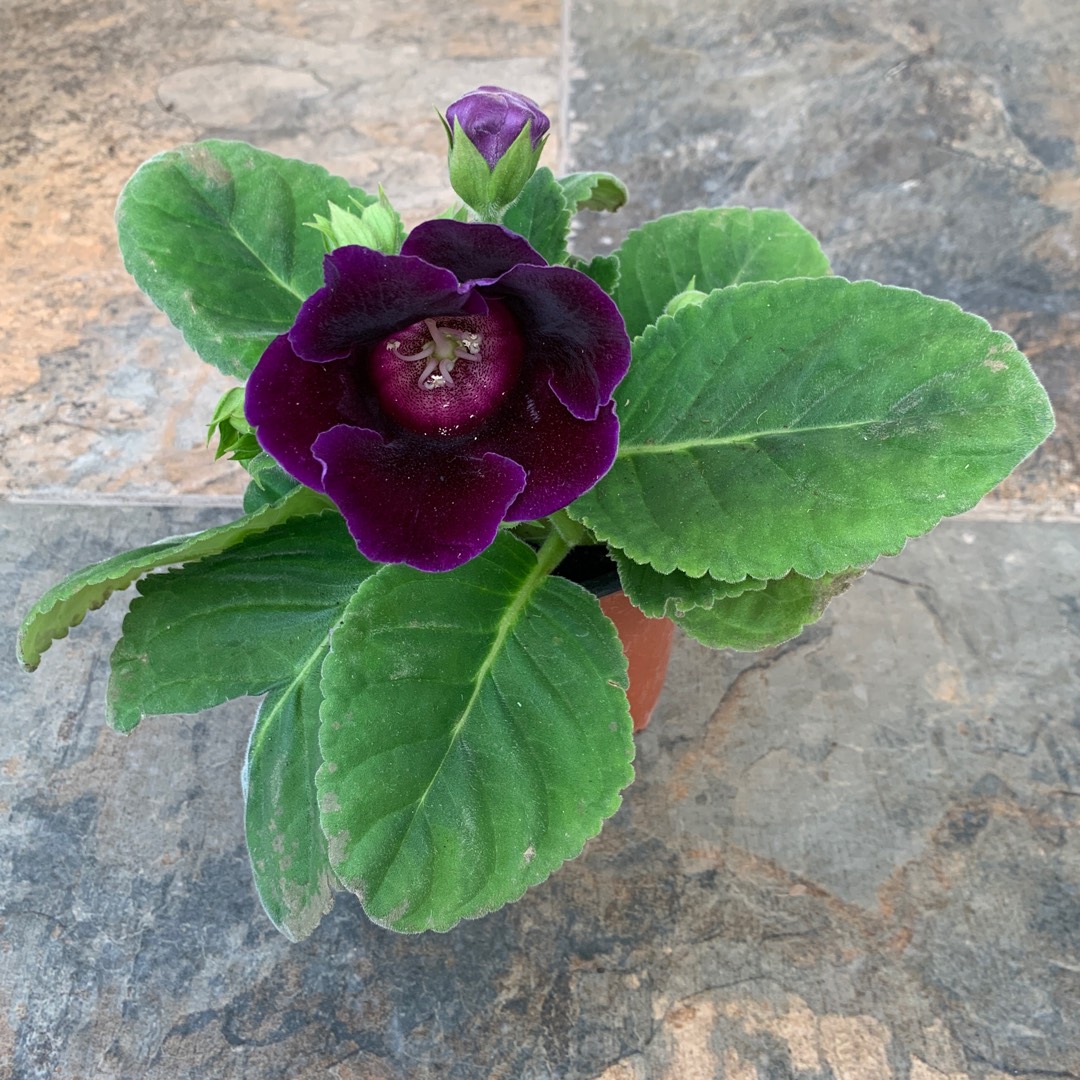
Sinningia speciosa
Florist's Gloxinia
Gloxinias are native to Brazil and are now widely cultivated as garden and house plants. They grow 15 to 30 cm (6 to 12 inches) in height and produce large, tubular or bell-shaped flowers surrounded by attractive foliage of a soft, velvety texture. The blooms are characterized by their richness and variety of colouring, which ranges from shades of blue and purple through pink and crimson to white. Gloxinias have tuberous roots and ovate or oblong leaves with toothed margins. The preferred method of propagation is by seed planted indoors in late winter, but choice varieties can be increased by cuttings. The plants require a period of dormancy after flowering. Gloxinias may be put outdoors in summer in moist, rich soil in a warm but shady location.
-
Partial shade
-
Occasional watering
-
Not Frost hardy
-
Moist and free draining
Common name
Florist's Gloxinia
Latin name
Sinningia speciosa
type
Tuber
family
Gesneriaceae
ph
5.0 - 7.0 Acid - Neutral
Plant & bloom calendar
-
Best time to plant
full grown dimensions
 0.15 M
0.15 M
0.15 M
0.15 M
Sinningia speciosa
Gloxinias are native to Brazil and are now widely cultivated as garden and house plants. They grow 15 to 30 cm (6 to 12 inches) in height and produce large, tubular or bell-shaped flowers surrounded by attractive foliage of a soft, velvety texture. The blooms are characterized by their richness and variety of colouring, which ranges from shades of blue and purple through pink and crimson to white. Gloxinias have tuberous roots and ovate or oblong leaves with toothed margins. The preferred method of propagation is by seed planted indoors in late winter, but choice varieties can be increased by cuttings. The plants require a period of dormancy after flowering. Gloxinias may be put outdoors in summer in moist, rich soil in a warm but shady location.
Planting in containers
From Early Spring TO Early Summer
To grow as a houseplant, place Sinningia speciosa in a bright area, near a sunny window but out of direct sunlight. They will thrive in average room temperatures of between 16-24C. When growing these houseplants as annuals, they don’t need repotting. If you pot up the plant or need to replace some of the soil, use an African violet potting soil mixture. It is best to leave the young plant in its original pot as the roots are tender and the plant is not easy to transplant to a larger container when it is young.
Propagation by seed
From Early Spring TO Early Spring
To grow from seed, sow in a 4- to 6- inch pot where it can grow to full size. Fill the pot with African violet potting soil. Make sur the mix has been well sifted. Moisten the soil and press the seeds gently onto the surface but don’t bury them as they need light to germinate. Place the pot in a plastic bag and seal the top to keep the soil moist and the air humid. The seeds will germinate in three or four days. At that time, open the top of the bag, and remove it completely after a week. Mist the soil when the surface feels dry.








